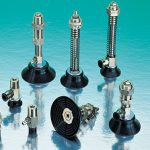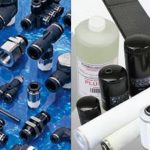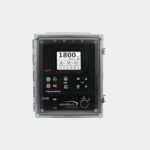It’s a pretty basic concept: you have something that moves air, and you need to attach it to something that has to have air pressure in order to do its job. You need to be able to detach that tool quickly, so you can’t use screws or other complex machinery. Enter the standard thumb-latch connector, and your problems are solved! Seems like there’s not much there that needs changing — but pneumatic fittings have in fact evolved in recent years.
The Old Guard: Metal Latch Couplings
More than 55 years ago, when pneumatics were first becoming industry standards across the world, the metal latch coupling was born. Cast of strong metals with as few moving pieces as possible, they held up against the extreme changes in internal air pressure easily. After a few years of trial-and-error to establish what the standardized sizes would be, metal latch couplings became so ubiquitous that they seemed to be a foregone conclusion. You need to connect pneumatics, you use a metal coupling, done deal.
But then, along came plastic and changed everything.
Plastic Latch Pneumatic Fittings
Plastic is lighter — significantly lighter — than metal, and its ability to remain strong even when more thinly sculpted allows for a more ergonomic fitting. Furthermore, plastic is resistant to corrosion in a way that metal isn’t, which made the plastic coupling much more durable under a variety of different industrial conditions.
And plastic wasn’t done yet.
Plastic Twist-Lock Connectors
Twist-lock connectors were the logical extension of the Luer-taper fittings of the previous century: simple pneumatic fittings that could be slipped together and locked tight with a mere quarter-turn. Because they are nearly as durable as a plastic latch fitting but don’t require a latch or button to activate, twist-lock connectors can be used in smaller spaces, or in implements like sphygmomanometers (blood pressure cuffs) where the much heavier plastic latch would cause usability problems.
With quick-disconnect pneumatic fittings evolving from the near-indestructible and extraordinarily reliable metal latches that are still industry standard after more than half a century of use to the the very small, very light, and easy-to-operate plastic twist-lock, there are very few places where pneumatic connections are an engineering challenge these days — and we’re all better off for it.























